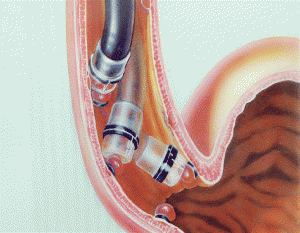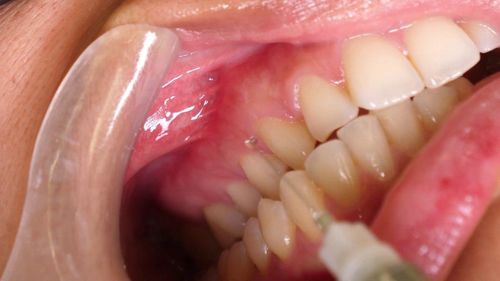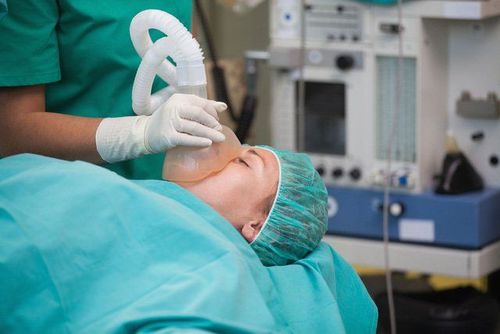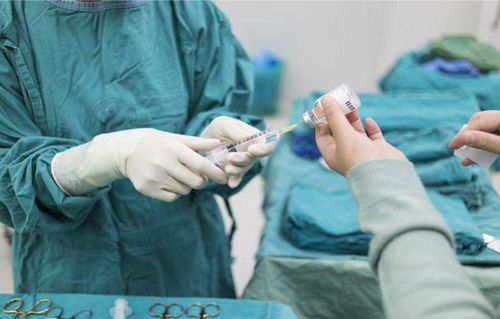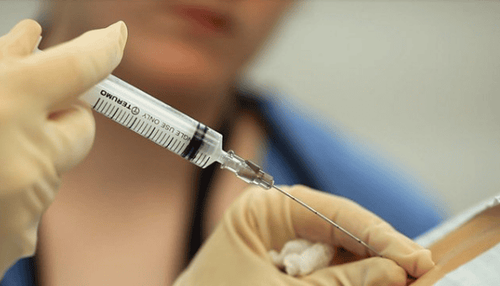This is an automatically translated article.
The article is professionally consulted by Specialist Doctor I Tran Thi Ngat - Department of General Surgery - Vinmec Danang International General Hospital.
Endotracheal anesthesia is a technique of general anesthesia, combined with endotracheal intubation to control breathing, this is the technique of choice for anesthesia in cases of severe chest trauma with indications for emergency thoracotomy. .
1. Outline of open chest trauma
Open chest trauma is a common surgical emergency due to trauma caused by sharp objects piercing the chest, daily life accidents, traffic accidents..., in open chest wounds including injuries such as perforation of the wall chest, pleural space communicating with the outside, heart damage, artery damage...There are many degrees of chest trauma, depending on the extent of damage to the organs in the chest. Open chest trauma is the preferred surgical emergency because it can cause severe respiratory and circulatory disorders leading to death. to many serious sequelae affecting health and ability to work.
When treating an open chest wound, it is necessary to perform first aid first (seal the open wound, ensure a clear airway, give blood, give fluids if the patient has hemorrhagic shock); Surgical method is indicated in most cases, especially in some cases where emergency thoracotomy is needed when necessary.
Depending on each specific surgical case, the appropriate anesthesia method is selected. Endotracheal anesthesia is the anesthetic method of choice in cases of surgical treatment of severe open chest wounds, combined wounds with indications for emergency thoracotomy.
2. Endotracheal anesthesia procedure in open chest wound surgery
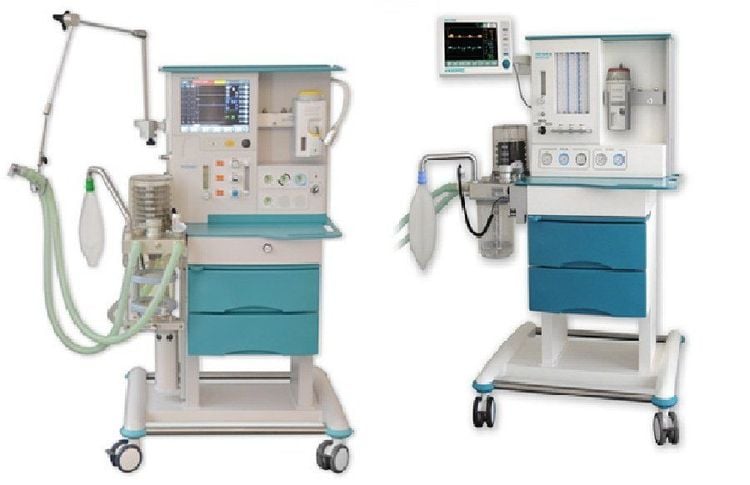
Cần chuẩn bị máy gây mê kèm máy thở trước khi gây mê nội khí quản
The person performing the technique: Anesthesiologist and nurse specialist. Intubation and anesthesia facilities: Anesthesia machine with ventilator, hand-held oxygen source, vital function monitor, sputum aspirator, defibrillator... Laryngoscope, endotracheal tube different sizes, straws, mask, Ambu balloon squeeze, oropharyngeal cannula, Magill pliers, soft mandrin. Drugs: Lidocaine 10% spray, beta-agonist salbutamol spray, drugs used for anesthesia and accompanying drugs such as opioid analgesics, muscle relaxants... Prophylactic means in case of intubation difficult trachea: Cook tube, flexible bronchoscope, laryngoscope mask, tracheostomy kit when intubation is not possible, mouth opening pliers... Patients: Full examination before anesthesia to prevent danger Risk of complications, assessment of the risks of difficult intubation, patient and family members are explained the risks of surgery. 2.2 Steps to take
The patient lies on his back, breathes 100% oxygen from 3-6 l/min at least 5 minutes before induction of anesthesia, installs a vital indicator monitor, establishes an infusion line. Anesthesia: Use intravenous anesthetics (propofol, etomidate, thiopental, ketamine...) or inhaled liquid inhalation anesthetics (sevoflurane, halothan...), or a combination. Combine with pain relievers: Morphin, fentanyl... Muscle relaxants if needed.

Thuốc propofol dùng thuốc mê đường tĩnh mạch

Hình ảnh đặt nội khí quản đường miệng
Choose which side of the nose to open and apply vasoconstrictor drops such as naphazoline, otrivin... Choose the appropriate size of the endotracheal tube, smaller than that of the mouth. Insert an endotracheal tube lubricated with lidocaine grease through the nostrils Open the patient's mouth, then insert the laryngoscope to the right side of the mouth, move the tongue to the left, push the lamp deeply, coordinate with the other hand to press the thyroid cartilage ring to find the epiglottis and glottis. If favorable: Insert the endotracheal tube through the glottis, stopping when the balloon of the endotracheal tube passes about 2-3 cm through the vocal cords. If not favorable: Need to use Magill pliers to guide the tip of the endotracheal tube into the correct glottis; The assistant pushes the endotracheal tube in from the outside. Remove the laryngoscope. Endotracheal balloon pump. Check the correct position of the endotracheal tube by auscultation and EtCO2 results Fix the endotracheal tube with adhesive tape. In case of difficult intubation: It is necessary to use tools and apply difficult intubation procedures, if not intubation, it is necessary to switch to another method of anesthesia.
Maintenance of anesthesia: The patient is maintained under anesthesia with intravenous anesthetic or inhalation anesthetic, with analgesia and muscle relaxants if necessary. Control the airway with a machine or squeeze a balloon. Monitor after intubation Monitor depth of anesthesia Monitor vital signs: Pulse, temperature, blood pressure, Sp02... Prevent endotracheal tube from improper position, bend, obstruct . Criteria for extubation after thoracotomy After surgery, the patient is awake and can follow orders. Breathe regularly, breathing rate within normal limits. Pulse and blood pressure are stable. Body temperature > 35 degrees Celsius. No complications from anesthesia and surgery
3. Complications due to intubation and complications after surgery
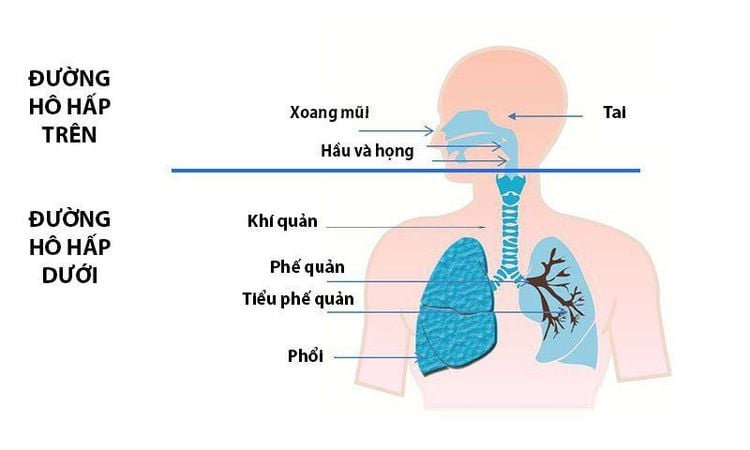
Khi đặt nội khí quản có thể gặp tai biến viêm đường hô hấp trên
Reflux of gastric juices into the airways Hemodynamic disorders: Hypotension or hypertension, arrhythmias (bradycardia, tachycardia, arrhythmias). ). Complications due to intubation: If the intubation is not possible, if intubation is difficult, it is not possible to switch to another suitable anesthesia method. Misplaced in the stomach, need to reintubate the endotracheal tube. Constriction of the larynx, trachea and bronchus Trauma when intubating such as: Bleeding, patient's tooth fracture, vocal cord injury, foreign object falling into the airway breathing... Respiratory complications: The endotracheal tube was pushed deep into one lung, the endotracheal tube was folded, blocked; Decreased or open respiratory system, out of oxygen source leads to lack of oxygen. Some complications after extubation: Respiratory failure after extubation can be caused by many causes, sore throat hoarseness, spasms of the larynx, trachea and bronchi, inflammation of the airways upper respiratory tract, laryngotracheal stenosis... Some common complications after open chest trauma surgery;
Infection of wounds, incisions. Atelectasis Pneumothorax, thickened pleural adhesions Endotracheal anesthesia is indicated when the patient's open chest trauma is severe, requiring emergency thoracotomy. However, there are also some cases of difficulty in intubation and some complications occur when intubation.
Vinmec International General Hospital with a system of modern facilities, medical equipment and a team of experts and doctors with many years of experience in medical examination and treatment, patients can rest assured to visit. examination and treatment at the Hospital.
To register for examination and treatment at Vinmec International General Hospital, you can contact Vinmec Health System nationwide, or register online HERE.





